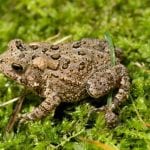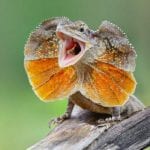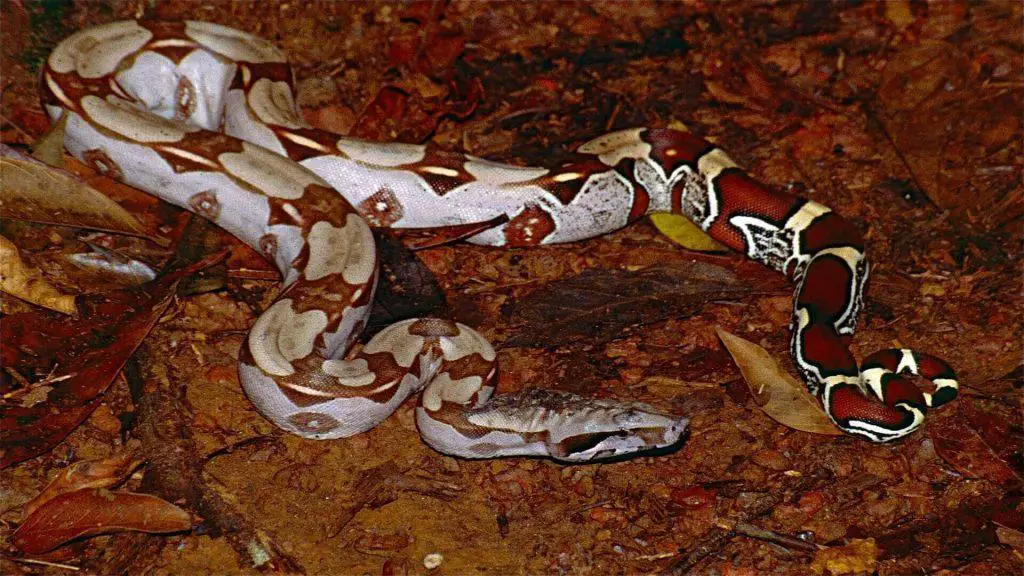
A pet boa is fascinating. It’s one of the most active snakes as they can be alert and are receptive to their owner’s training and interaction. This snake is one of the most popular pet snakes, and this is because of their impressive appearance and docile behavior especially when well trained.
Rosy and sand varieties of boas are the most common and are often found in most exotics pet store. These are usually large snakes that are only 30 inches long. These are very easy to handle and can adapt to almost all types of enclosure, big or small.
One of the most common questions that pet snake owners have, especially with pet sand and rosy boas, is to what type of substrate to put inside their enclosures. Should they use sand or soil to keep their pets in tip-top shape?
Quick answer
Sand boas should be kept inside an enclosure with a deep layer of reptile sand. This type of sand is unlike the sand you use in aquariums and construction because it’s smooth and weighs more. With this type of sand, your pet can easily burrow deeply as this is what it’s used to do in the wild. Boas love to burrow and hide until it’s safe and cool enough for them to come out and hunt for food. Here are the advantages of using reptile sand.
- Reptile sand is dry and thus, your snake can easily burrow inside it.
- Reptile sand is smoother and thus more comfortable on your snake’s skin.
- Reptile sand helps your pet easily find food.
- Reptile sand is available in most pet stores and also online.
- Deep reptile sand is the perfect hiding place if your pet wants to be alone.
- Deep reptile sand helps your pet feel secure as the weight keeps them still and safe.
- Reptile sand is easy to clean and remove compared to soil.
But if you must use other types of substrate, you can use soil, but it has to be dry soil. If you were to use soil, don’t just use garden soil or soil from your yard or garden. Use soil that’s fine, free from small rocks and roots and other plant material. Also, if you want to use dry soil, use more of it to create a deeper layer of the substrate because sand tends to be heavier than soil. Again, the advantages of soil are
- Soil is available in your garden or yard. You can get soil from a local garden shop.
- Loose soil is easy to place inside the enclosure
- Loose soil makes it easier for your pet to burrow but won’t be as heavy as sand
Other possible types of the substrate include flat hides, aspen bedding, and many more. An exotics pet shop can help you find the right substrate for a pet boa
Important notes about choosing the right substrate
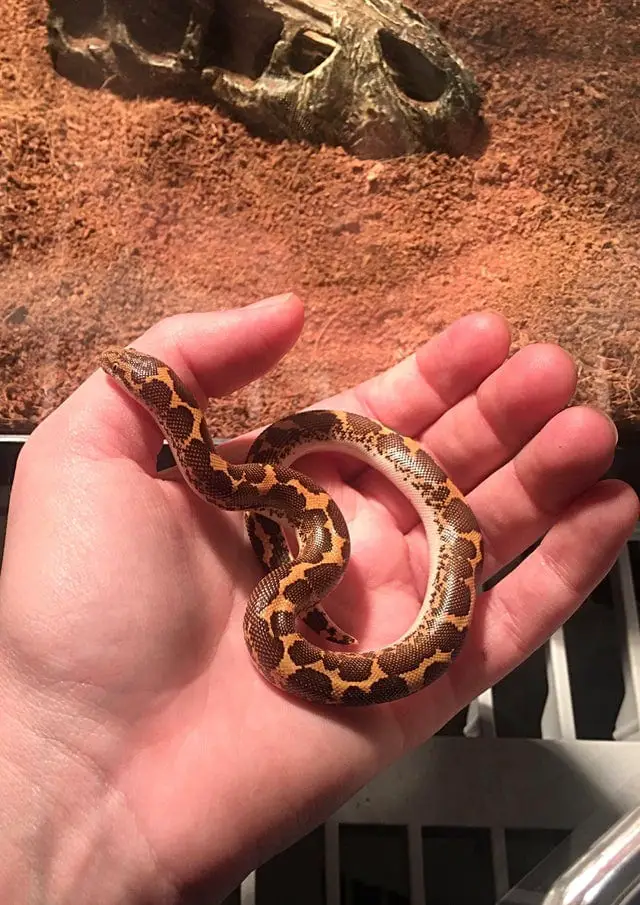
The substrate is one of the most important things to consider, especially when setting up your pet boa’s enclosure. Sometimes first-time pet owners overdo it and place all kinds of accessories and unnecessary things inside their pet’s enclosure which can make it difficult for their pets to move around.
The right substrate should make your pet secure and safe. You must also consider a substrate that’s easy to spot clean and to remove during general tank cleaning. Also, the best substrate must not be too large enough for your pet to ingest.
If you use ordinary sand, these bits are too large for your pet if it ingests it. Snakes and other ground feeders like turtles, tortoises, and lizards can help eating sand if this is their substrate since bits of sand can cling on their food. Using their large mouths to scoop up their food from the ground will also make them eat sand as well.
If they eat sand every meal, these bits can easily accumulate inside their guts causing colic and other digestive system problems. Also, ordinary sand is heavy and thus, this can stay inside your pet’s digestive tract for a long time.
The only way to avoid ingestion of sand is to use a substrate that’s intended for snakes and other reptiles. Some substrates are safe for snakes as well. Consider the following substrate solutions
Feeding your snake outside the enclosure
Because of the possibility of ingesting sand, snake pet owners usually take their snakes out of the enclosure and place it in another tank to feed it. Many find this a practical way to feed boas and also reduce the risk of your pet ingesting sand. Just remember the following things
- Right after feeding, avoid handling your pet for at least an hour or two to prevent regurgitation. Depending on what your snake ate, it could take time for your pet to completely ingest its food. It would be safer to leave it alone inside its enclosure to avoid this.
- Place safe substrate materials inside the second tank. We prefer a newspaper or paper towels since these are very easy to remove.
- Serve food warm, make this a good experience for your pet so that it will associate this new tank with good food.
Taking your pet to the vet to check for sand in the gut
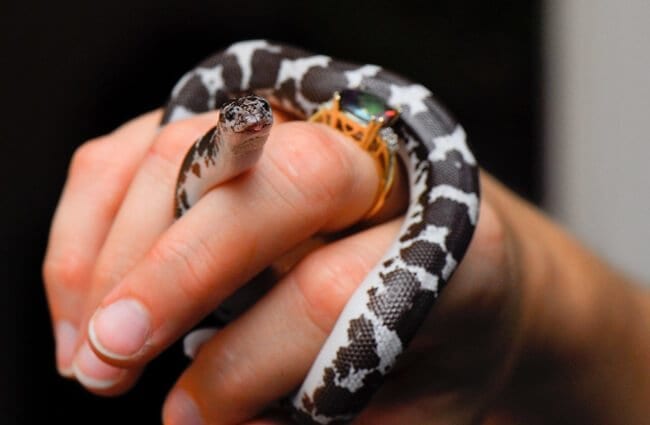
Most pet owners panic upon learning that sand is inappropriate for their pets. They worry if their pet boas may have ingested too much sand, especially when they have been using sand for a long time.
The best way to find out if your snake has ingested a lot of sand is to take it to the vet. An exotics vet can check your snake’s gut using imaging techniques to find out the presence of sand and other indigestible materials inside its stomach.
Usually, a vet may advise treatments for a snake that has ingested sand. Too much sand can be a worry, and this can be removed by surgery. A small amount of sand may not be a worry as this may be eliminated naturally.
Other types of substrates
Image Source https://www.mysnakepet.com/rosy-boa-care/
Newspaper as a substrate
A newspaper is one of the most popular types of substrates and bedding because this is readily available. You can get newspapers for free and usually, it’s easy to change and remove when it’s soiled. You can place a pile of loose newspaper inside your pet’s enclosure and your snake will never ingest it. However, you must be careful in using a safe newspaper, the kind with no inks and surface that can be toxic for your pet.
Your pet boa won’t be able to dig through newspapers, and this is not suitable for long term use. Boas especially sand boas, would prefer a deep and loose substrate where it can remain safe.
Use paper towels
Paper towels are similar to newspapers as this can be easily removed and replaced when soiled. Paper towels are easily available everywhere, and it’s not too hard to dispose of. This material is better than newspapers because it does not have any ink and thus won’t be inhaled by your pet and won’t irritate it.
But just like newspapers, a snake that burrows like a boa will not like it. It’s flat and dry and not too comfortable to be in. But if your pet is not the burrowing type, then you might do well with using paper towels.
Carpets as substrate
Carpets are also a suitable substrate, but it’s not for a burrowing snake like a boa. It is easy to find and sometimes these are free if you use carpet remnants. And if you have an old substrate, then this would do fine. This is smooth and will be perfect for your snake’s smooth skin.
But the downside of using carpets is that these can soil easily and thus you need to wash it regularly. If you prefer this type of substrate, then use two pieces of carpet so you’ll have a spare in case you’re washing the other one.
Artificial turf
This is similar to grass when it comes to color, texture, and density. This is available in different sizes and is very easy to install in an enclosure. You should have a few extras so that your pet can stay in a new, unsoiled one as you clean the dirty turf.
Snakes find this comfortable, and it’s easy to spot clean too. Artificial turfs are also available in most home builder’s supplies stores. You can also purchase a large piece and just cut this according to the size of your pet’s tank.
Aspen shavings
Cedar and fine shavings are not good for boa enclosures, but aspen is recommended. This material is ideal for smaller snakes and those species that do not require higher humidity levels because this material can easily become moldy because of a lot of moisture. Also, the smaller particles can get stuck under the scales and this can lead to irritation.
Cypress Mulch
Cypress mulch is a good substrate for snakes. This type of material is easier to dig in and will retain humidity very nicely. Cypress mulch has a good smell and not overwhelming. This can be placed inside the enclosure as a deep layer, but you have to remove all the material to completely clean the tank.
But before using cypress mulch, bake it in your oven for at least half an hour. This will kill mites and insects that may be found among the pieces.
Coconut fiber substrate
Another good substrate is coco fiber. This is comfortable, soft, and has the natural ability to fight odor. This is a good substrate that will let pet boas burrow. You may not find this in a local pet store, but you can order it online at Amazon.


